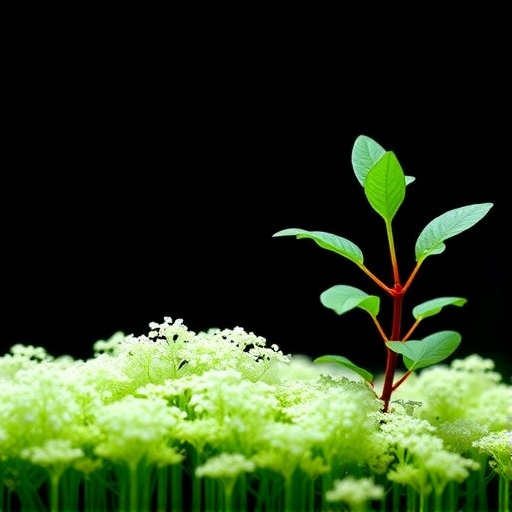In an era marked by rapid industrialization and urban expansion, water pollution has emerged as one of the most pressing environmental challenges. Contemporary research has begun to highlight innovative solutions aimed at mitigating the detrimental effects of chemical pollutants in aquatic ecosystems. Among these solutions, bio-adsorbents have gained substantial attention due to their versatility and effectiveness in water purification processes. The exploration of these natural materials opens a new frontier in sustainability and represents a critical step towards achieving global environmental goals.
Bio-adsorbents, derived from various natural sources such as agricultural waste, peat, and even microorganisms, have demonstrated promising capabilities to absorb harmful substances from water. Their effectiveness lies in their unique adsorption mechanisms, which enable them to interact with pollutants at both chemical and biological levels. This interaction not only facilitates the removal of contaminants but also enhances the regenerative nature of these materials, thereby promoting a circular economy.
One of the significant advantages of bio-adsorbents over traditional treatment methods is their environmentally friendly profile. Unlike synthetic adsorbents, which often involve extensive chemical processes and associated energy consumption, bio-adsorbents are typically produced with minimal environmental impact. This inherent sustainability factor is crucial in the context of current policies aimed at achieving Sustainable Development Goals (SDGs), particularly the third (Good Health and Well-being) and sixth (Clean Water and Sanitation) goals.
In the evaluation of bio-adsorbents, advanced techniques such as Artificial Neural Networks (ANN) and Response Surface Methodology (RSM) have been employed to optimize their performance. These methodologies enable researchers to predict the adsorption capacity and efficiency of various bio-adsorbents, thereby guiding the selection of the most suitable materials for specific pollutant removal applications. The integration of these optimization techniques with practical experiments has demonstrated a significant improvement in the treatment process, showcasing the potential for greater deployment in real-world scenarios.
The mechanisms of adsorption facilitated by bio-adsorbents are diverse and can be attributed to various factors, including physical adsorption, chemical bonding, ion exchange, and biomimetic interactions. Each of these mechanisms contributes to the overall efficiency of pollutant removal, making it essential to understand the underlying processes at a molecular level. For instance, the surface properties of bio-adsorbents, such as porosity and functional group availability, play a pivotal role in determining their efficacy. Researchers have been investigating these characteristics to design bio-adsorbents tailored for specific contaminants.
SWOT analysis (Strengths, Weaknesses, Opportunities, and Threats) is another tool that has been applied to evaluate the feasibility and scalability of bio-adsorbents in various settings. The strengths of bio-adsorbents lie in their natural origin, cost-effectiveness, and adaptability to varying environmental conditions. However, weaknesses such as potential instability during prolonged use and lower adsorption capacities compared to synthetic alternatives have been highlighted. Addressing these weaknesses presents a significant opportunity for further research and development.
Market demand for sustainable water treatment solutions is driving innovation in the field of bio-adsorbents. Numerous studies are underway to explore new sources of bio-adsorbents, ranging from by-products of food production to invasive plant species. By converting waste materials into effective adsorbents, researchers not only tackle pollution but also contribute to waste management initiatives, thereby yielding ecological and economic benefits simultaneously.
The global implications of harnessing bio-adsorbents extend beyond local applications; they can significantly contribute to the achievement of international environmental goals. By providing sustainable alternatives for water treatment, these materials can help nations reach their commitments under various environmental treaties and agreements. As countries strive to improve water quality standards, the role of bio-adsorbents will likely become increasingly prominent in policy discussions.
Renewed interest in bio-adsorbents can be observed in the growing body of literature that highlights their capabilities and diverse applications. Recent studies have showcased the effectiveness of various bio-adsorbents in removing heavy metals, dyes, and pharmaceuticals from wastewater. Not only do these studies present promising outcomes, but they also underscore the need for standardized methodologies to evaluate and compare the performance of different bio-adsorbents in real-world scenarios.
Despite the promising developments in bio-adsorption technologies, challenges remain. The commercialization of bio-adsorbents requires addressing aspects such as scalability, consistency in performance, and regulatory compliance. Collaboration among researchers, industries, and policymakers will be crucial in overcoming these hurdles and fostering the widespread adoption of bio-adsorbents in water treatment processes.
As global awareness of environmental issues continues to rise, the search for effective and sustainable solutions becomes more critical. The role of bio-adsorbents in treating water contaminated with chemical pollutants offers a glimpse into the potential for harmonizing human activity with ecological preservation. Future research will undoubtedly explore further innovations in bio-adsorbents, paving the way for a cleaner, more sustainable future in water management.
In conclusion, the advancement of bio-adsorbents in environmental science not only represents a notable technological shift but also embodies a holistic approach to ecological sustainability. The collective efforts of researchers, industries, and communities will be essential to leverage this potential, ensuring that clean water becomes a reality for all. As we move toward a future where water security is paramount, bio-adsorbents stand out as a beacon of hope, merging innovation with sustainability in the pursuit of better environmental practices.
Subject of Research: The effectiveness of bio-adsorbents in the removal of chemical pollutants from water.
Article Title: The versatility and effectiveness of bio-adsorbents in the removal of chemical pollutants from water: adsorption mechanisms, optimization by ANN and RSM, SWOT analysis, and contribution to the 3rd and 6 th Sustainable Development Goals.
Article References:
Meftah, S., Meftah, K., Babassa, N. et al. The versatility and effectiveness of bio-adsorbents in the removal of chemical pollutants from water: adsorption mechanisms, optimization by ANN and RSM, SWOT analysis, and contribution to the 3rd and 6 th Sustainable Development Goals. Discov Sustain 6, 971 (2025). https://doi.org/10.1007/s43621-025-01359-7
Image Credits: AI Generated
DOI: 10.1007/s43621-025-01359-7
Keywords: Bio-adsorbents, water treatment, sustainability, environmental science, adsorption mechanisms, ANN, RSM.




